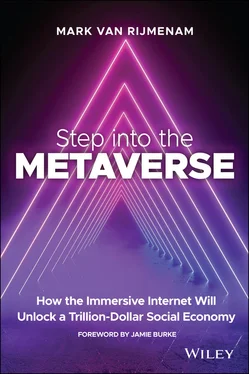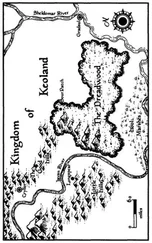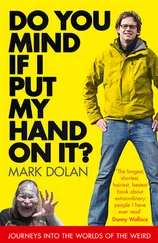Of course, for the metaverse-natives (Generation Alpha and, to a lesser extent, Generation Z), embracing the metaverse is easy. The challenge lies with the older generations who are not accustomed to an omnipresent immersive internet and persuading them that embracing virtual and augmented reality offers new opportunities, including amazing experiences.
This book aims to help you understand the metaverse, what it is, how it will work, how you can benefit from it, and how we should build it. Of course, no book on the metaverse is complete without referencing its origin. The metaverse is a term coined by novelist Neal Stephenson in his famous 1992 novel Snow Crash (Bantam Books, 1992). The novel defines the metaverse as a place where people use virtual reality headsets to interact in a digital game-like world. The novel has enjoyed cult status, especially among Silicon Valley entrepreneurs, and HBO is turning the book into a series. The same applies to the book Ready Player One (Crown Publishing Group, 2011) by Ernest Cline, which was turned into a movie by Steven Spielberg in 2018, where the protagonist depicts the metaverse as a “virtual universe where people go [..] for all the things they can do, but stay for all the things they can be.” 9Both sci-fi books see the metaverse as a digital universe that we interact with using virtual reality. This falls short of the actual metaverse that is being constructed at this moment, where virtual reality is only one channel to interact with the metaverse. In addition, both authors depict the metaverse as commercially owned and as a way to help people escape the dystopian reality of the future world. While this is certainly a possibility for our own future, we do have a chance to prevent a dystopian future where a small elite controls the metaverse and our planet is distraught by climate change. It will be a long and challenging fight—those in power generally are very reluctant to relinquish it to the community—but one we cannot afford to lose. If anything, the dystopian future as described by Stephenson and Cline is not something to look forward to, so we should ensure we build an open, decentralized, and community-driven metaverse and fix the mistakes of Web 2.0.
With this book, I aim to give you the tools to create an open metaverse so that we avoid ending up in a worse version of today. I hope it will help you navigate the immersive internet, and, more importantly, it will discuss how we can build a metaverse that is open, inclusive, decentralized, and not controlled by Big Tech. *After all, we should avoid making the same mistakes as we did when building Web 2.0. When Sir Tim Berners-Lee invented the Web, he envisioned it to be decentralized and open, with data to be controlled by the user, but we ended up with silos controlled by Big Tech. 10Now that we are entering the next phase of the internet, and with the technology ready, we can fix what we did wrong. After all, a closed metaverse controlled by Big Tech or the state will very likely result in a dystopian nightmare that we should avoid at all costs, as we will see.
We will also discuss what can go wrong in the metaverse. Not to scare you from entering the metaverse, but just as cybercriminals are active on the current internet, hackers and scammers will also constantly patrol the metaverse, on the prowl for their next victim. The metaverse will be hacked, and everyone must be aware of how the metaverse can damage society, organizations, and individuals. With more and more devices connected to the internet—it is expected that by 2030 there will be 125 billion devices connected to the internet, with 7.5 billion internet users—there will be ample opportunities for cybercriminals to hack you, your business, and the metaverse, inflicting damages totaling $10 trillion, already in 2025. 11As described in the fictional story, it will be relatively easy for cybercriminals to pretend to be someone else in the metaverse; if someone looks like your sister and sounds like your sister, we are quickly to believe that she is your sister. But even this problem is relatively small compared to a metaverse flooded by harassment and toxic recommendation engines that create immersive filter bubbles, further dividing and polarizing society and harming individuals.
The first chapter will dive into what the metaverse is and could become because a shared understanding of this new concept is important if we all want to benefit from it. What are the characteristics of the metaverse, and how do these impact our experience? We will begin our journey at the start of the dotcom bubble when the internet arrived for the first time. Web 1.0 allowed personal computers to connect, and the internet arrived in our living room, but only sometimes would you go on the internet. Web 2.0 arrived with the smartphone, although there is no set date when exactly the mobile internet started. It brought the internet closer to us, allowing us to be always online, but we still have to make an effort to “go on the internet,” as in getting your phone or opening your laptop. The next iteration of the internet will be an internet that is always there. It is always on, and you are always connected to it, potentially even when asleep, e.g., your Apple Watch tracking your sleep. It will be ready to interact with whenever you want or need to. 12
This immersive internet requires new hardware solutions, as without augmented reality (AR) and virtual reality (VR), we will remain observers instead of active participants of this virtual world. We will discuss what AR and VR are, where we are now, and where we need to go before it becomes mainstream and the physical and digital worlds truly converge. We will also dive into the key characteristics of the open metaverse and how we can create a metaverse that delivers the most value to society.
Then, in Chapter 2, we will explore how we can achieve an open metaverse that empowers its users instead of enslaving them and what the benefits of such a metaverse will be to society.
In Chapter 3, we will explore the rise of avatars and digital humans —2D or 3D representations of our identity in the digital world—and how these digital identities will redefine what it is to be human. We will investigate how avatars will change our identity and why reputation will become even more important in the virtual world. Of course, avatars cannot walk around the metaverse naked, so digital fashion and digital products will explode in the coming years, offering brands a new approach to connecting with their customers in ways that are sustainable and environmentally friendly.
Once we understand who we can be in the metaverse, we will discover what we can do in the metaverse in Chapter 4. Humans have always tried to escape reality, be it using story telling around a fire to reading a book, but now for the first time, we can create our own space and invite anyone from around the world to join and have a social experience away from daily life. Of course, users who prefer a solitary immersive experience can also find that in the metaverse. There will be millions of metaverse spaces similar to the current internet, and knowing your way around the metaverse will improve your experience. Therefore, we will dive into how to traverse the metaverse and have an immersive experience while listening to music, gaming, playing sports, shopping, and learning.
Of course, the metaverse will not only be for fun. For organizations, it will mean serious business. Increasing brand loyalty, developing digital twins, collaborating in virtual reality—the future of work will revolve around the metaverse. Chapter 5will discuss how brands can step into the metaverse, including numerous examples of brands who have already ventured into it, and what brands can do to become successful in the metaverse. Chapter 6will explore how location data and the Internet of Things (IoT) will be the driving force to propel homes, offices, factories, supply chains, and entire cities into the metaverse. Although many enterprise metaverse environments will be closed walled gardens to provide privacy and security, the consumer version of the metaverse will work only if the metaverse is an open and inclusive space controlled by users instead of Big Tech. Zuckerberg might have claimed the metaverse with his rebranding to meta, but he should never own and control it.
Читать дальше












